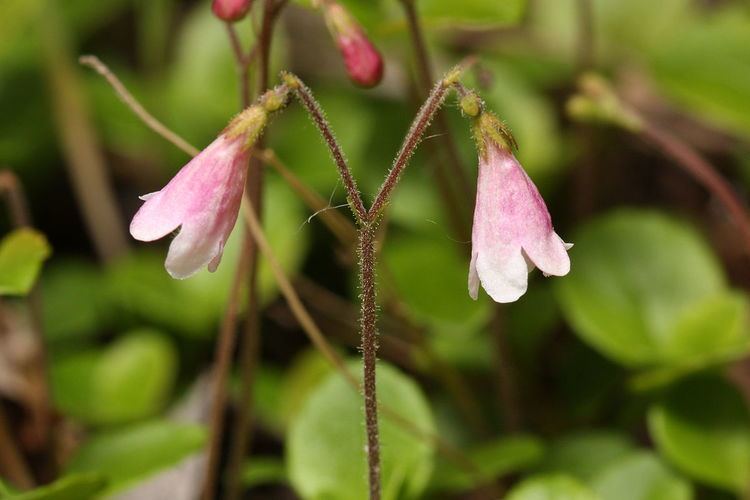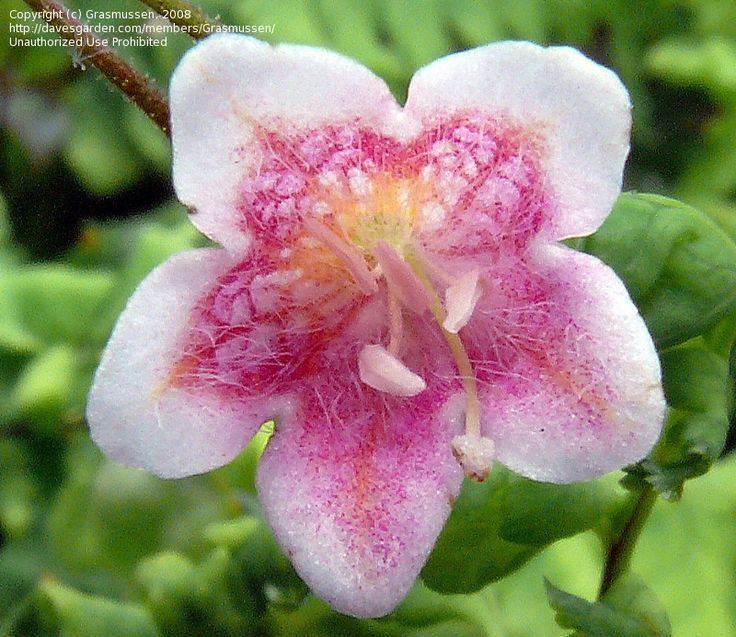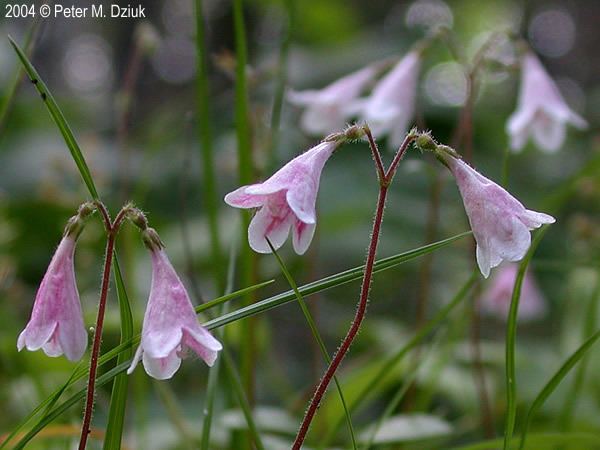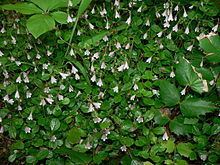Kingdom Plantae Family Caprifoliaceae Scientific name Linnaea Rank Genus | Order Dipsacales Species L. borealis Higher classification Caprifoliaceae | |
 | ||
Similar Caprifoliaceae, Trientalis, Linnaea amabilis, Monotropa, Kalmia | ||
Linnaea garden plants
Linnaea is a plant genus which has often been classified in the family Caprifoliaceae (the Honeysuckle family) but may be more accurately considered to belong to its own family, Linnaeaceae. The genus includes a single, generally boreal to subarctic woodland subshrub species, Linnaea borealis, commonly known as twinflower (sometimes written twin flower).
Contents
- Linnaea garden plants
- Classification
- Nomenclature
- Description
- Ecology and distribution
- Conservation
- References

This plant was a favorite of Carl Linnaeus, founder of the modern system of binomial nomenclature, for whom it was named.

Classification

The genus Linnaea is now considered to include only a single, circumboreal species, Linnaea borealis, with three subspecies generally recognized:


The genus Linnaea is usually treated in the Caprifoliaceae, along with Lonicera, Symphoricarpos, and related genera, but sometimes classified in its own family Linnaeaceae, along with such similar genera as Abelia, Dipelta, Kolkwitzia, and Zabelia, but not Lonicera or Symphoricarpos.
Nomenclature

Linnaea is one of the few kinds of plants or animals to be named after Carl Linnaeus, who knew it well from his explorations of Lapland in northern Sweden in 1732. It was his favorite plant, and as a young man, he named it "Linnæa" (now transliterated as "Linnaea"). However, in his Systema Naturae (first published in 1735), Linnaeus instead called this plant "Rudbeckia", for Olaus Rudbeck and his son Olof Rudbeck, Lapland explorers who knew the species. Later, in his Species Plantarum of 1753, Linnaeus used the genus name Rudbeckia instead for a quite different plant in the Asteraceae, still known by that name.
The genus name Linnaea was first published by Linnaeus' teacher Jan Frederik Gronovius, with the name formalized under the modern system of botanical nomenclature by Linnaeus himself in 1753 in his Species Plantarum, where Linnaeus also formally described and named the species Linnaea borealis, with the epithet "borealis" referring to its northern distribution.
The common name "twinflower" for Linnaea borealis refers to the plant's paired flowers.
Description
The perennial stems of Linnaea are slender, pubescent, and prostrate, growing to 20–40 centimetres (7.9–15.7 in) long, with opposite evergreen rounded oval leaves 3–10 millimetres (0.12–0.39 in) long and 2–7 mm (0.079–0.276 in) broad. The flowering stems curve erect, to 4–8 cm (1.6–3.1 in) tall, and are leafless except at the base. The flowers are paired, pendulous, 7–12 mm (0.28–0.47 in) long, with a five-lobed, pale pink corolla.
Ecology and distribution
Linnaea borealis has a circumpolar distribution in moist subarctic, boreal, or cool temperate forests, extending further south at higher elevations in various mountains, in Europe south to the Alps, in Asia south to northern Japan, and in North America south to northern California and to Arizona and New Mexico in the west, and to West Virginia (and formerly Tennessee) in the Appalachian Mountains in the east.
Linnaea borealis is self-incompatible, requiring cross-pollination to produce viable seeds; since pollen dispersal is usually not far, individuals and clonal colonies can become reproductively isolated. Regardless of seed production, Linnaea plants in a particular area often spread by stolons to form clonal patches of the same genotype. Such clonal stands of Linnaea can be long-persisting, in some places remaining extant even if seed is not produced or if seedling germination or establishment does not occur.
The species was presumably common in areas south of its present range during times of Pleistocene ("Ice Age") glaciations, and its clone-forming perennial growth habit has allowed it to survive the subsequent millennia locally within this former range in various high-elevation or otherwise cool and moist habitats, including algific talus slopes with persisting underground periglacial ice.
Conservation
While the three subspecies of Linnaea borealis are all considered widespread, abundant, and secure in their main, northern ranges, all three subspecies are of conservation concern near the subspecies's range edges or at more southerly, disjunct sites.
In Great Britain, Linnaea borealis ssp. borealis is listed as "nationally scarce", growing mainly in open pine woodlands in Scotland and northernmost England. Foresters consider this plant to be an indicator species of ancient woodlands, often found in association with creeping lady's tresses. It is found in about 50 sites around the country, with most situated in the woods around the Cairngorms; the southernmost locations are four sites in Northumberland and one in County Durham. The sparseness of the sites is responsible for the continued decline of the plant in the country. In Scotland, 37% of L. borealis patches studied consisted of a single genotype, reproducing clonally vegetatively but not producing viable seed. This is a conservation concern because without viable seed, the species may not be able to re-populate restored habitat, and may not be able to adapt to climate change by establishing new populations.
In the United States, Linnaea borealis ssp. americana is of conservation concern in several states along or near the southern edge of the species' range, including Arizona, Iowa, Massachusetts, North Dakota, Pennsylvania, and West Virginia, and was known historically but now considered extirpated or possibly so in Illinois, Indiana, New Jersey, Ohio, Rhode Island, and Tennessee.
In Canada, Linnaea borealis ssp. longiflora is considered of conservation significance in the Yukon Territory, along the eastern edge of its range, where ssp. americana is widespread and abundant.
Since many of the outlying southern sites for Linnaea borealis are in habitats that are at high elevations or otherwise in cooler microclimates than the surrounding general landscapes, ongoing and prospective climate change has become a significant concern for the conservation of this species in such places, such as Ice Mountain in West Virginia, a low-elevation algific talus slope with persisting buried ice.
